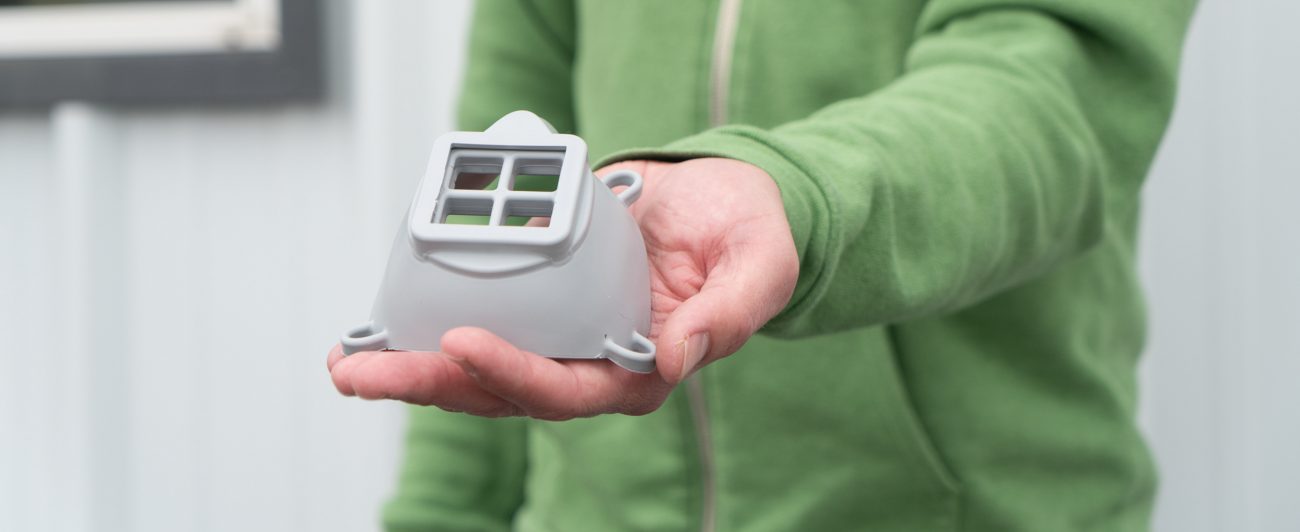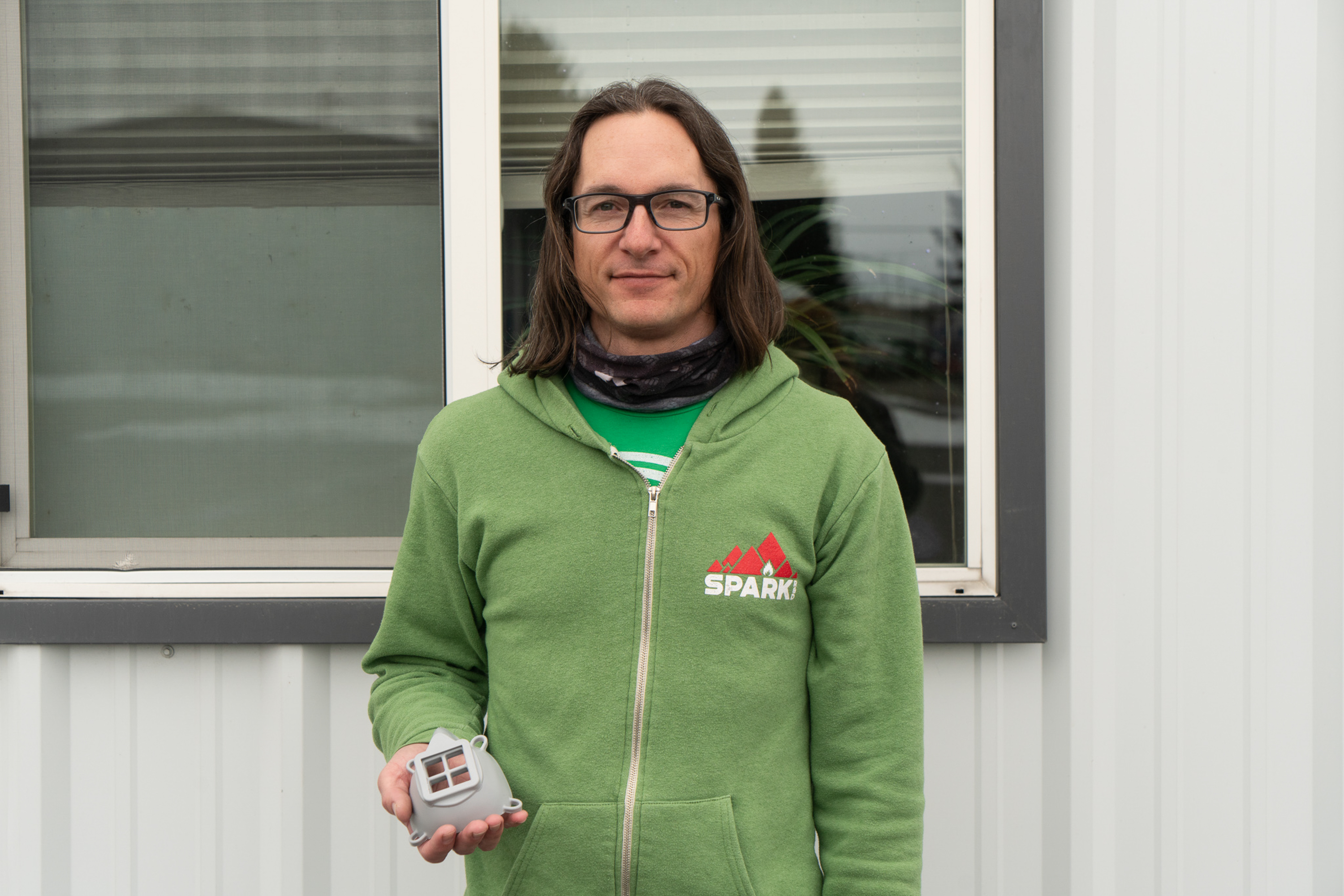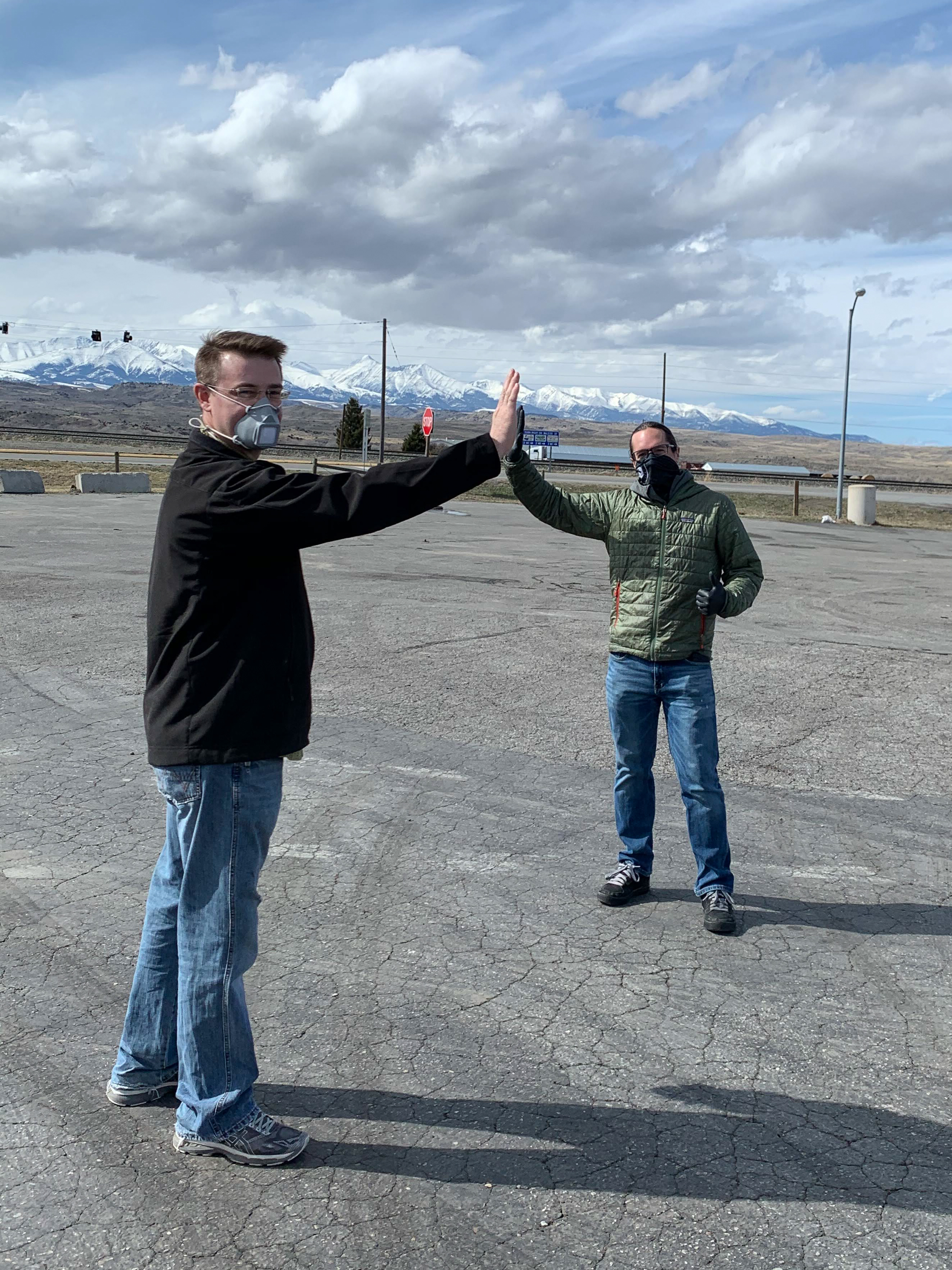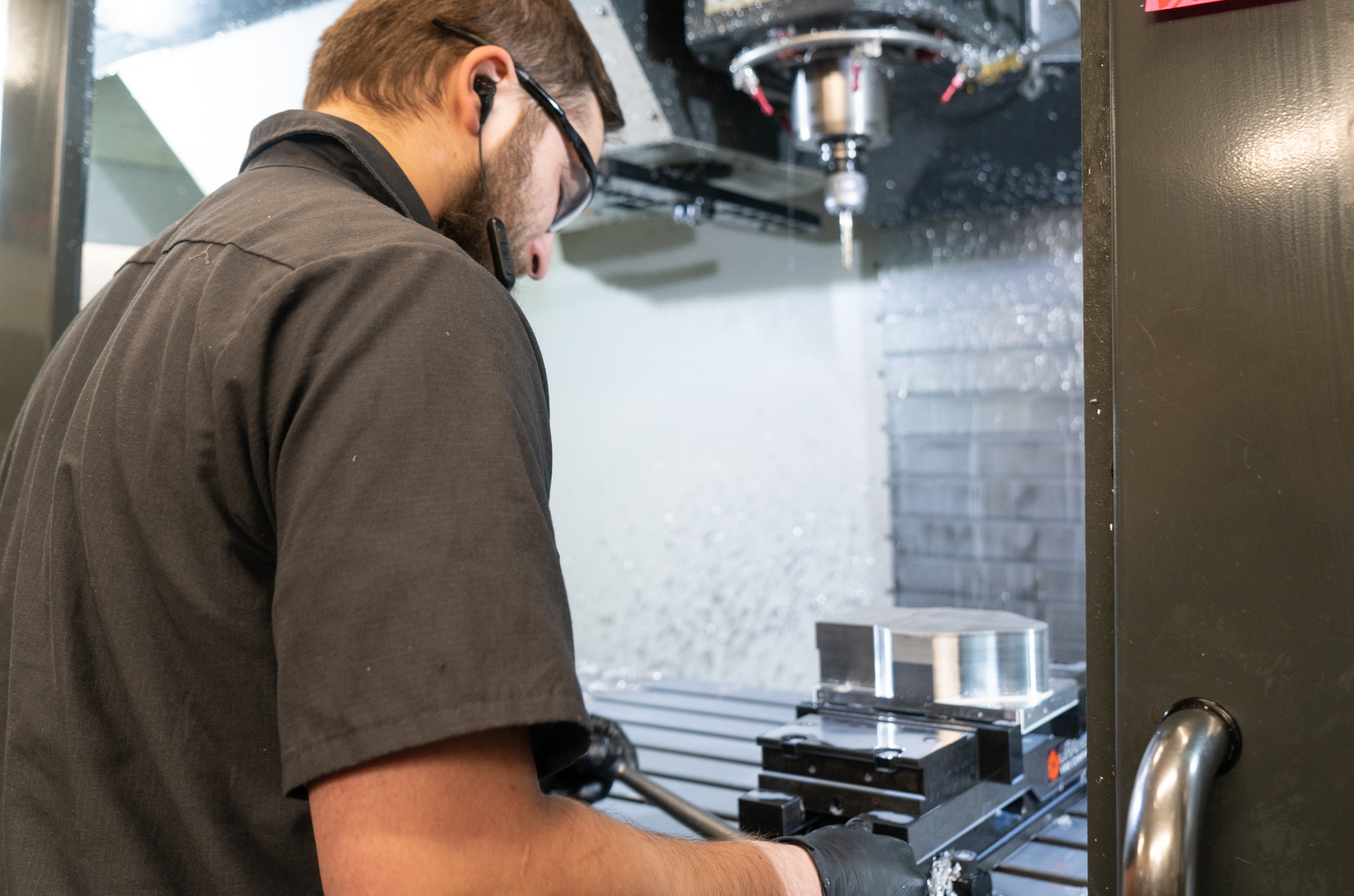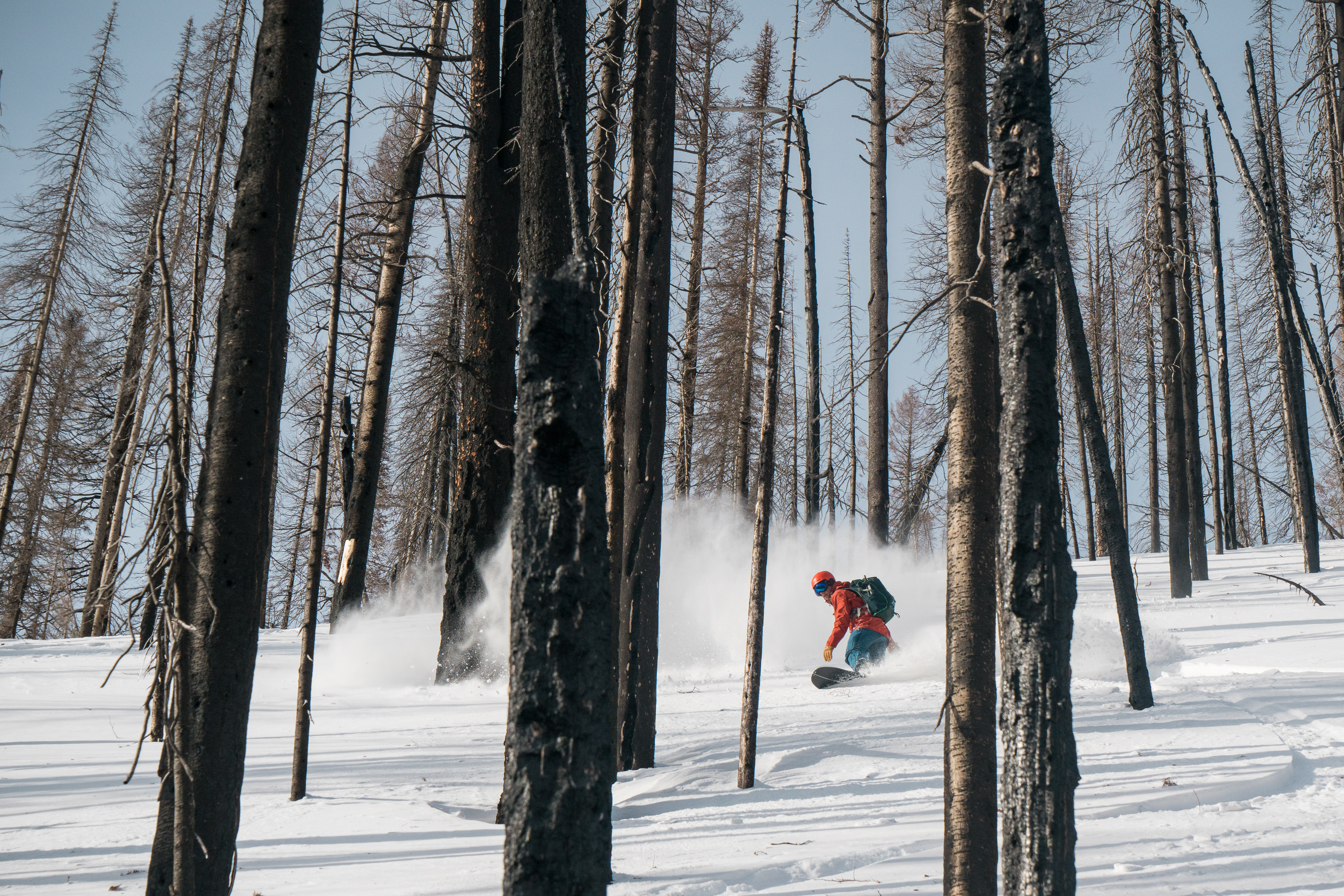News
Spark R & D’s Montana Masks
Learning By Doing
Will Ritter doesn’t know the meaning of quarantine and chill.
Or maybe he does, but he chooses not to partake. Will can’t help it—he’s a creator. He goes by the title of “Co-Owner/Chief Designer” for Spark R&D, the Bozeman, MT-based splitboard binding company that employs over 50 folks and handles all production in-house at their solar-powered facility. When the COVID-19 pandemic hit the lower 48, Will did what he does best: build things. In this case, injection-molded masks to supply local health care facilities that were desperately in need.
Spark R&D’s Will Ritter holding an injection-molded Montana Mask in front of the splitboard-binding company’s facility in Bozeman, MT.
It began on March 23, when Will read a CNN report about the “Montana Mask,” an open-source design for anyone with a 3D printer to build face masks in response to the severe shortage of personal protective equipment [PPE] in the United States. Developed by a trio in Billings, MT—Dusty Richardson, MD, Spencer E. Zaugg, DMD, and Colton Zaugg—each mask would take around three hours to produce on a 3D printer. Will reached out to Dr. Richardson with a solution: what if the masks were injection molded?
“We have two injection molding machines and they can pop a part out about every 60 seconds,” Dan Ventura, Spark’s Marketing Manager, explains. “Barring any type of machine breaking down, you’re looking at 120 an hour if both machines are running. Will realized we could make thousands of these masks per day.”
And Spark’s team moved quickly. By March 31, the splitboard binding factory—which had ceased normal operations under Montana’s Stay at Home order—was converted to a PPE factory. Not all of the 50 employees are on hand, and Dan is quick to point out that proper sanitary and social distancing practices are in place. They’ve been pumping out masks for $2 a pop to cover material and labor costs, to feed a growing demand for PPE at health care facilities in Montana and beyond.
Dr. Dusty Richardson of Billings, MT and Spark R&D’s Will Ritter exchange a socially distanced high five after delivery of the first 2,400 injection-molded Montana Masks in early April.
“We’re in a unique position to take the 3D printed mask to injection molded production,” Will says. “We do design, prototype and manufacturing all in-house, it’s what we excel at and I was sick of listening to the news and feeling helpless. This is something we can really do to help, and we have a whole crew of talented people at Spark to make this happen.”
One of those talented people is Spark’s Senior Machinist and Design Engineer Ethan Marcoux, who’s been spearheading the design and production process with Will since day one. “It’s been a little bit of a whirlwind,” Ethan says. “We went from me and Will talking about this on the 25th of March, to having a design down on the 27th and then by the 29th we had our first parts built. I didn’t think it was going to go that quickly, but with all of us putting in a lot of hours in the first few days we were able to get the first round of masks to Billings by Sunday evening [March 29] for the first testing. We had a few revisions to be made on the molds after that and by the middle of the next week we had our first production round of parts being sent out.”
That testing happened in a parking lot in Big Timber, a small-town midway between Bozeman and Billings. Will brought the masks to Dr. Richardson for what Dan calls a “socially-distanced feedback session.” Since then, it’s been a 24-hour operation, with Will hand-delivering the bulk of almost-15,000-and-counting masks (as of press time) to Billings. To fuel demand, Spark recently took delivery of 7,700 pounds of material, sourced a trucking company that is committed to the cause, and began consulting with other companies wishing to do the same. It’s an all-hands-on-deck process that, as Ethan says, “has been largely a learning by doing” affair.
Spark R&D CNC Tooling Assistant/Operator Cory Deegan working on the Montana Mask mold.
Spark’s reusable Montana Masks come in size-small and size-large and require a small patch of filtration material to work. They allow existing N95 masks to be cut into numerous pieces and utilized to their fullest potential at a time when there is an extreme shortage of protective equipment for health care workers. Will has provided the Computer-Aided Design [CAD] files as open source software via Spark’s website and many other manufacturers have taken notice.
“I was in the Google drive folder last night where we’ve hosted all the CAD for the molds and there were 21 people in the folder at the same time,” Will said on the afternoon of April 15th. “There’s an operation in Everett, WA that’s up and running. A group in Michigan is making molds right now. There are a couple other spots in Montana that are making molds as well, and there are some folks in Maine that have molds done and they already busted out 400 masks yesterday. It’s wild how fast it’s come online and scaled up. We’ve been working with a ton of people that make me really proud of our group, and how we enjoy life and think it’s precious and want to take care of people.”
Will Ritter’s favorite office: the Montana backcountry. Seen here on a company yurt trip in early March, 2020, just before the COVID-19 pandemic became a reality.
Over the past week, Will’s been spending more time on the phone than he has behind a computer, juggling calls from hospitals in need and manufacturers interested in getting their own Montana Masks into production. “Unfortunately, I’m not in the pajamas and Netflix segment of the pandemic response right now, but maybe afterwards I’ll get to do that,” he says jokingly. But, more seriously, “It’s a fun challenge as a designer and a business owner to shift production so rapidly, and I’ve met a ton of interesting people from industries beyond snowboarding as we work together to respond to this crisis,” Will continues.
“It is definitely emotionally exhausting. That said, what we’re doing is nothing compared to the people that are working in the hospitals. I spoke to a surgeon yesterday who said, ‘I’ve got a 75-year-old person who’s got a pinched nerve and they’re COVID-19 positive and we’re trying to treat them’… It’s up to us to do what we can to help these people working on the front lines.”
To learn more about Spark R&D’s Montana Mask project, access the CAD files, or inquire about masks for your health care organization, visit https://www.sparkrandd.com/spark-rd-montana-mask-information-page/.
